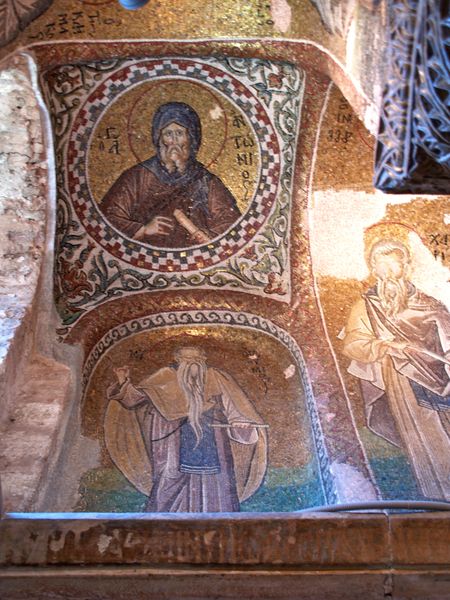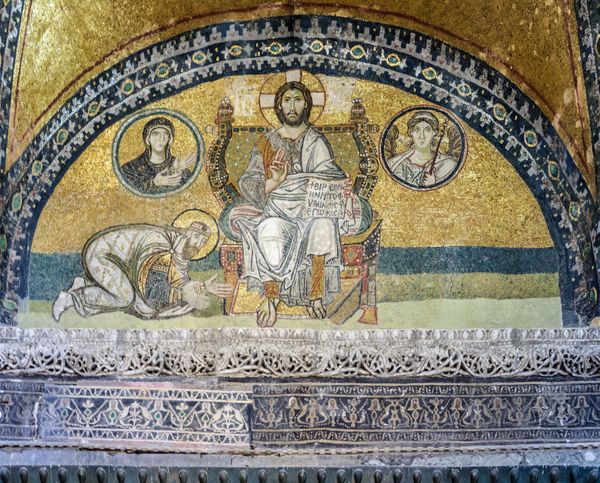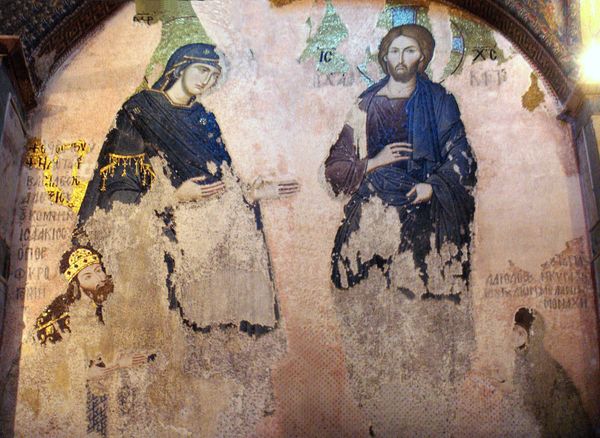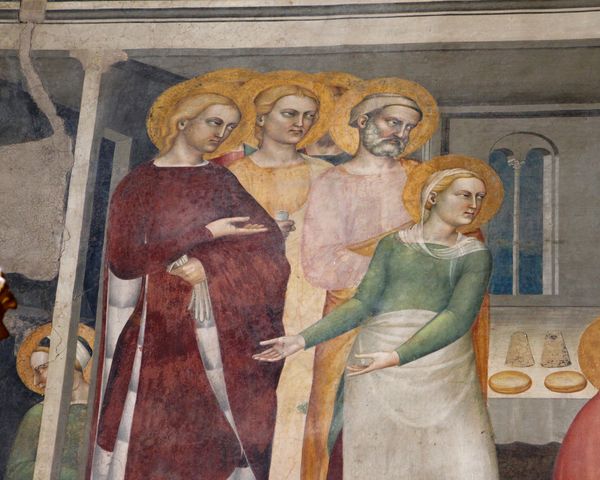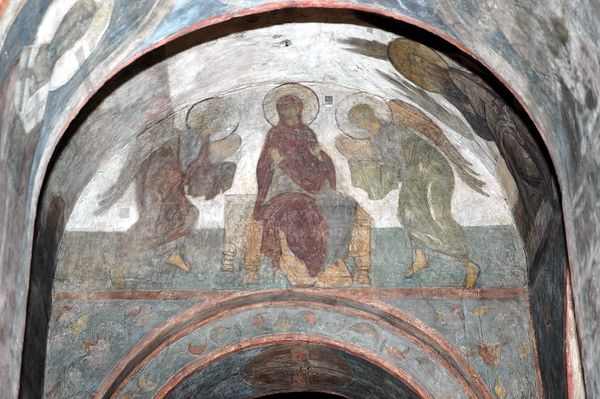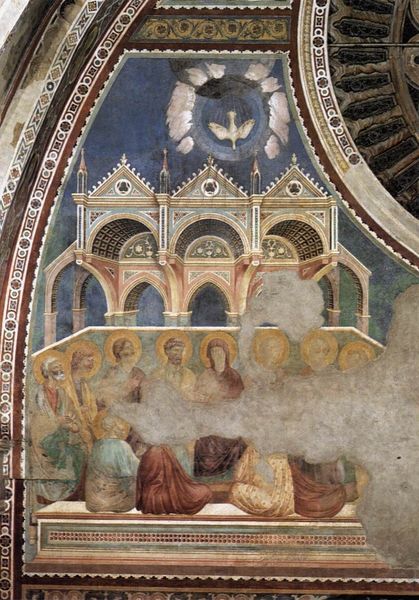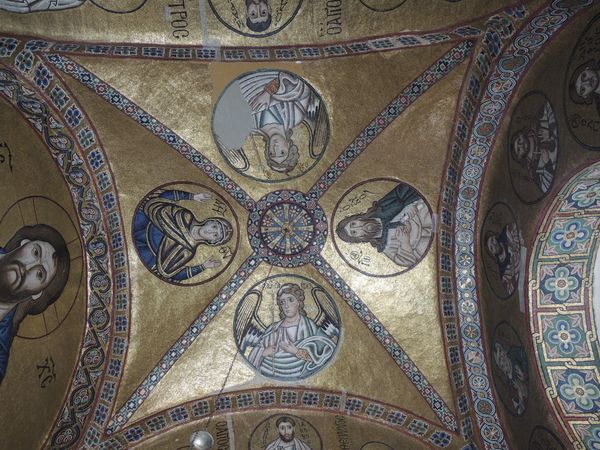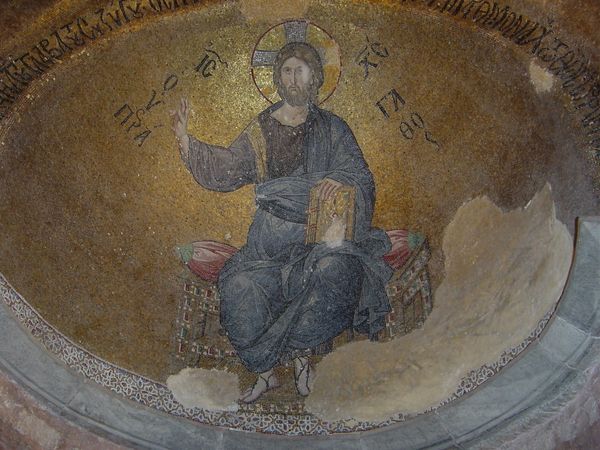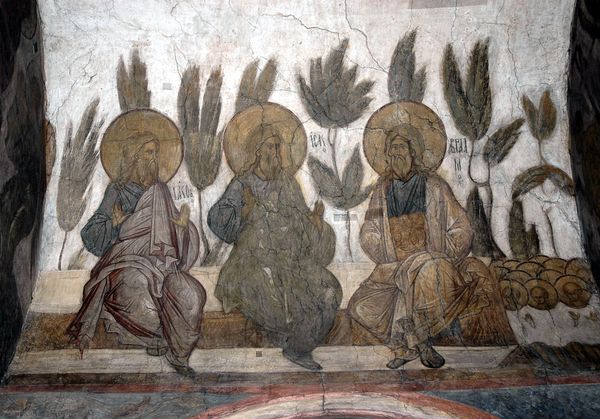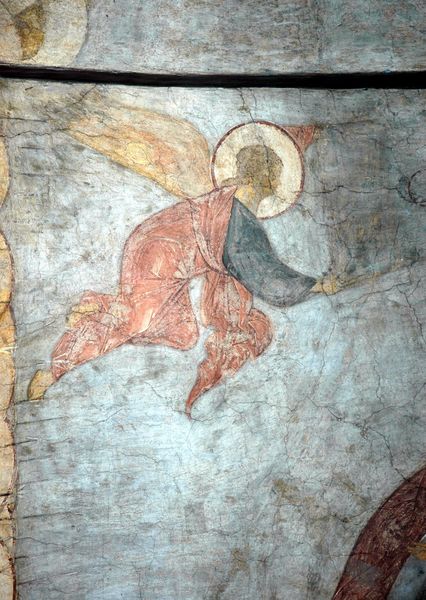
mosaic
#
portrait
#
mosaic
#
byzantine-art
#
medieval
#
figuration
Copyright: Public domain
Curator: Standing before us in the Hagia Sophia is the Deesis Mosaic, dating back to 1261. Its very survival is a testament to history. Editor: There’s a melancholy here. Even with the bright tesserae, the piece conveys a profound sense of supplication. Curator: Deesis, meaning “entreaty” or “supplication,” perfectly encapsulates the scene. Christ Pantocrator is flanked by the Virgin Mary and John the Baptist, each interceding for humanity. Think of the labor involved, the countless hours of cutting and placing each individual piece! Editor: The figures' positioning creates a visual hierarchy, anchoring on Christ. The artist used darker hues to emphasize the Virgin Mary and John, which adds dimension to the otherwise very gold surface. Curator: Consider the context too. This was created after the Fourth Crusade, when the city had been ravaged and looted. Restoring the mosaics was both a religious and political act, reclaiming Byzantine identity through a monumental crafting process. Editor: I am struck by the restrained emotionality in their faces, the use of shadowing in Christ's beard. There's a sophistication in the gaze that pulls the viewer in. Curator: This mosaic tells us much about Byzantine society - not just artistic talent, but a system of production where specialized labor creates images reflecting deep beliefs and imperial power. Editor: Absolutely. It’s a beautiful intersection between form and concept, and the mosaic’s survival feels miraculous. Curator: A synthesis of artistic achievement, spirituality, and Byzantine self-assertion indeed. Editor: Ultimately, experiencing the artwork through all of this is what helps us understand it, to connect to history.
Comments
No comments
Be the first to comment and join the conversation on the ultimate creative platform.

